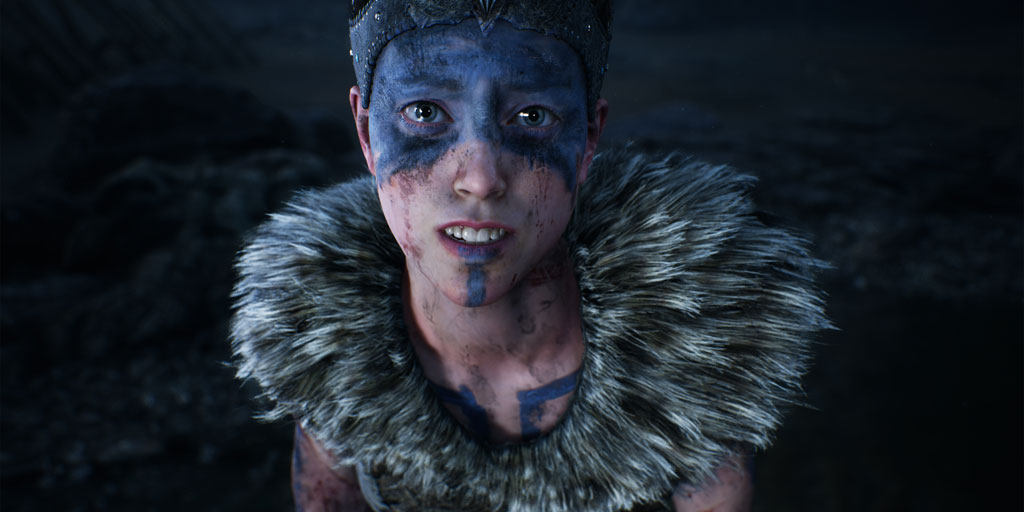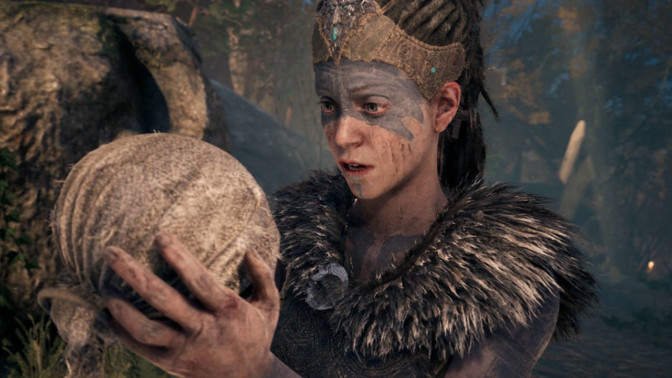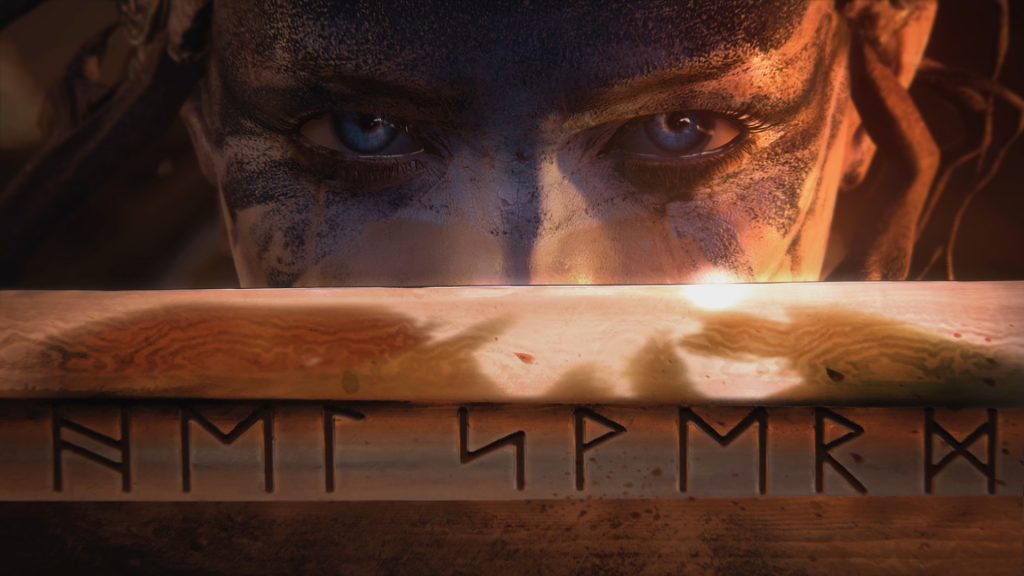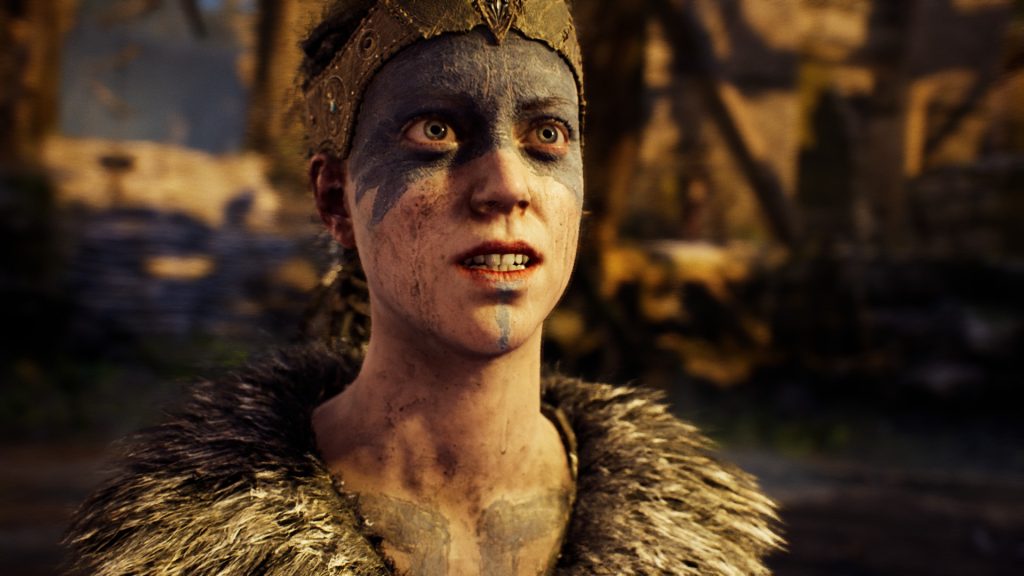Hellblade is a masterpiece, but it is a harrowing one. Play at your own discretion – the game could have several different triggers for those who have mental health issues or who have experienced trauma. This article contains spoilers.
I distinctly remember hearing the initial announcement for Hellblade, and thinking, “Oh god, here we go again.” I had absolutely no faith it would be good. Not that I doubted its merits as a video game – but because the success rate at accurately representing psychosis in games is approximately 0%.
Most franchises don’t even try. They take blatant advantage of public misunderstanding and generations of unwarranted fear of the mentally ill, using it as a cheap mechanic. A trope. Ultimately the only thing this does is increase stigma – a stigma that results in the social segregation of our most vulnerable people. It even makes them more vulnerable to crime and assault. Yes – games can do that, same as movies and the media have been doing. There are even organisations whose sole purpose is to try to prevent it.
Instead of using it as a cheap horror mechanic, Hellblade communicates to the player the experience of having psychosis. Really, really well.

Everything contributes to this. Within moments of gameplay the most obvious feature are the ever present voices, commentating, advising, mocking, following your every move. Wearing headphones this experience is instantly pervasive.
Without any knowledge of mental illness, that experience would be pretty confronting. For me, it was almost overwhelming. The character of these voices and the content of their speech is absolutely, to the letter, what my patients have been telling me their auditory hallucinations are like for years. Within seconds, I had a better understanding of the world these individuals live in than I have gotten from 11 years of studying and practising medicine.
Sometimes the voices deliver third person commentary: “She’s going through the door,”. Others, they’ll catastrophise, “She’s going to fail”, or even insult, “She’s weak, pathetic”. These flit between third and second person, often speaking directly to Senua. Depending on the circumstance they can deliver anything from warnings to encouragement to outright abuse. They have a variety of ages, and there is one particular voice which is male. All of this is entirely consistent with the nature of real life auditory hallucinations.
As you get further into the game you realise how deep the symbolism goes. Senua isn’t just hearing voices – her entire experience is driven by psychosis.

Senua persistently blames herself for her partner, Dillion’s, death. Because you are seeing the world through her eyes, there isn’t much to suggest that this isn’t true – Senua is so entrenched in her delusional belief system that everything becomes evidence for her guilt. Then there’s the “darkness”, the “black rot” – a metaphor for her illness, and yet physically on her body, devouring her. There is even a time that she is told she is already dead. This sensation – of being dead, of one’s own body rotting, is commonly described by patients experiencing psychotic depression.
Even the way that puzzles are solved feeds back into this delusional system thematically. It isn’t apparent at first, but when you lay it out, it screams at you. Senua unlocks doors by finding “runes” in the environment. These are shapes that can be made out of any part of her surroundings: a fallen tree reflecting in a lake, for example. Senua is literally seeing meaning where it doesn’t exist. And she is using it to progress. Each new pathway unlocked is the result of her falling further and further into this delusional system, justifying her belief that she is on the path to free Dillion’s soul from the Norsemen, a delusion evolved from her guilt and grief.
Perception adds so much to Hellblade thematically. Senua’s hallucinations are consistent with her mood and this is mirrored mechanically. At times they are nothing but derogatory, stifling progress, causing confusion and frustration. At others they are helpful – giving hints to puzzles and even aiding combat, warning, “Behind you!” in battle before the fatal axe swing strikes.

The game is delivered in three parts – the classic hero’s journey – except, nothing like it. Initially Senua is engulfed in tales and mythology. Real memories of a man she met appear to her with new meaning (often this is called ideas of reference), and he guides her through stories of Northmen, magic, and Gods of fire and ice. In the second act, Senua turns inwards. Each trial are literally warped memories of her past she has to face, and she is tormented by flashbacks that strike in the dark. By the conclusion, Senua is actively using her psychosis to her advantage. The patterns she sees are used to evade or defeat enemies, unlock paths, and release a strength within herself that she was never previously able to embrace. She describes this as a sword, but it is her – all along it was her.
And ultimately, she is able to be at peace. Not just with the grief, but with her illness, her darkness – the ever present companion to her journey. She rejects rejection. She turns her back on her father, the man who abused her, exacerbated her predisposition, who used her own mind against her. She turns her back on social expectations. And in doing so, she unlocks a new existence, where her illness is not a darkness, but a light.
Melina Juergens, and the Ninja Theory mocap and animation team, do a phenomenal job of representing the titular Senua. (This is all the more impressive seeing as Melina is not an actress, and she continued her role of video editor whilst doing all of the mocap and live features for Senua). The result of their hard work is a bold and admirable young woman who shows the best and worst of humanity. Senua is strong, and yet vulnerable. She is proud and yet brittle. She is kind, sweet, fierce, and stubborn. She is, at the depth of it all, human.

That’s so important. It helps us connect with her, to feel more acutely and empathetically her journey. But it also gives a face to those who experience mental illness, and one that, for the first time, displays their breadth and diversity. After all, these people are not an alien species. They are humans whose brain works differently. They deserve to be acknowledged all the facets of their humanity. They are our mothers, fathers, friends and foes. They are our partners, our children. They are you, and they are me. Senua is all of us. She is strong and weak, light and dark. She is as real as you are, and, like you, she deserves love and compassion. We all do.